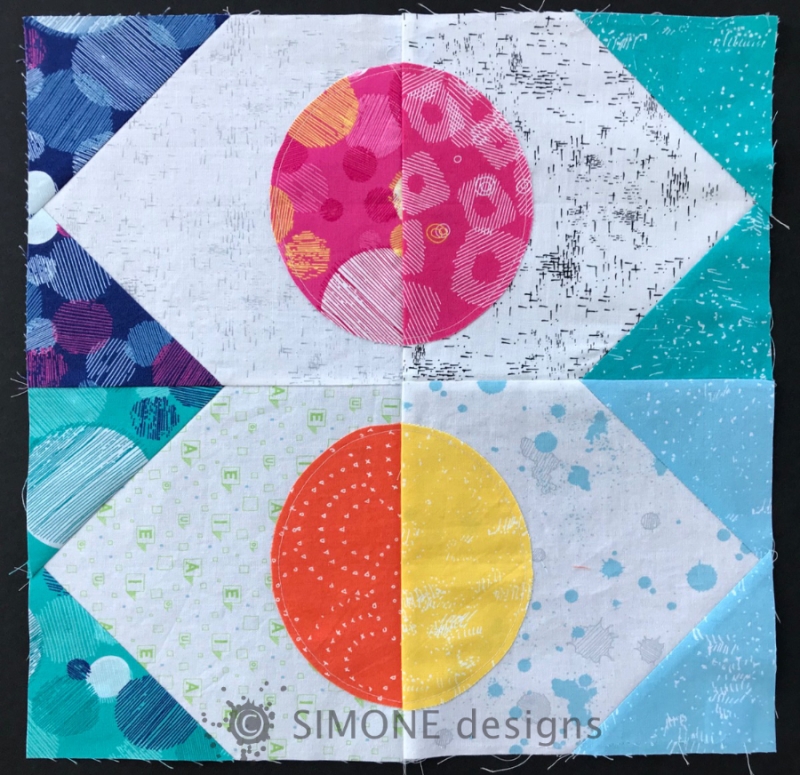
The Block Lotto blocks for January/February are now up on Simone Designs (Simone’s blog). This block is called Tri Ball, and is a clever raw-edge applique design that can be laid out in multiple ways:

The instructions to make Tri Ball are up on her blog, but read on for some tips. There are also more layouts on her blog, where they can be seen in full size. As per her usual, Simone has created another stunning design for us. Gather together your fabrics:
- Low volume for the background
- Warm colored fabric for the half-circle, such as reds, pinks, oranges, and yellows
- Cool colored fabric for the triangles, such as blacks, blues, greens and purple

I tried out her pattern and really had fun with it. (NOTE: I added a 1/4″ on the flat side of the half-ball to keep that shape once it’s sewn into the seam.)

[Bonus: by sewing an extra line 1/2″ away from the snowball-block line, I was able to cut in between the two stitching lines, gaining me a stack of half-square triangles.]

I decided to make some for myself, but wanted to have turned-edge appliqué, so I added 1/4″ all the way around, and used the freezer-paper method to shape that curve. You can see them pinned to the background with small appliqué pins on the right.
A REMINDER: We are asking you to make raw-edge appliqué for the blocks that you turn into for the Block Lotto drawing.
Please head over to Simone Designs for info on how to make these blocks. Make blocks during January and February, and bring them in to the March meeting for our Block Lotto drawing. The more blocks you make, the better your chances at winning!



You must be logged in to post a comment.